The automation paradox: Why are so many enterprises drowning in the very technology meant to save them?
For years, enterprise leaders have chased the promise of automation. Millions have been invested in tools like Robotic Process Automation (RPA), hoping to unlock a new era of efficiency. However, what was once considered the highest level of agility has become a maze of fragmented systems. Siloed bots and isolated scripts have created disconnected blocks of efficiency that don’t talk to each other.
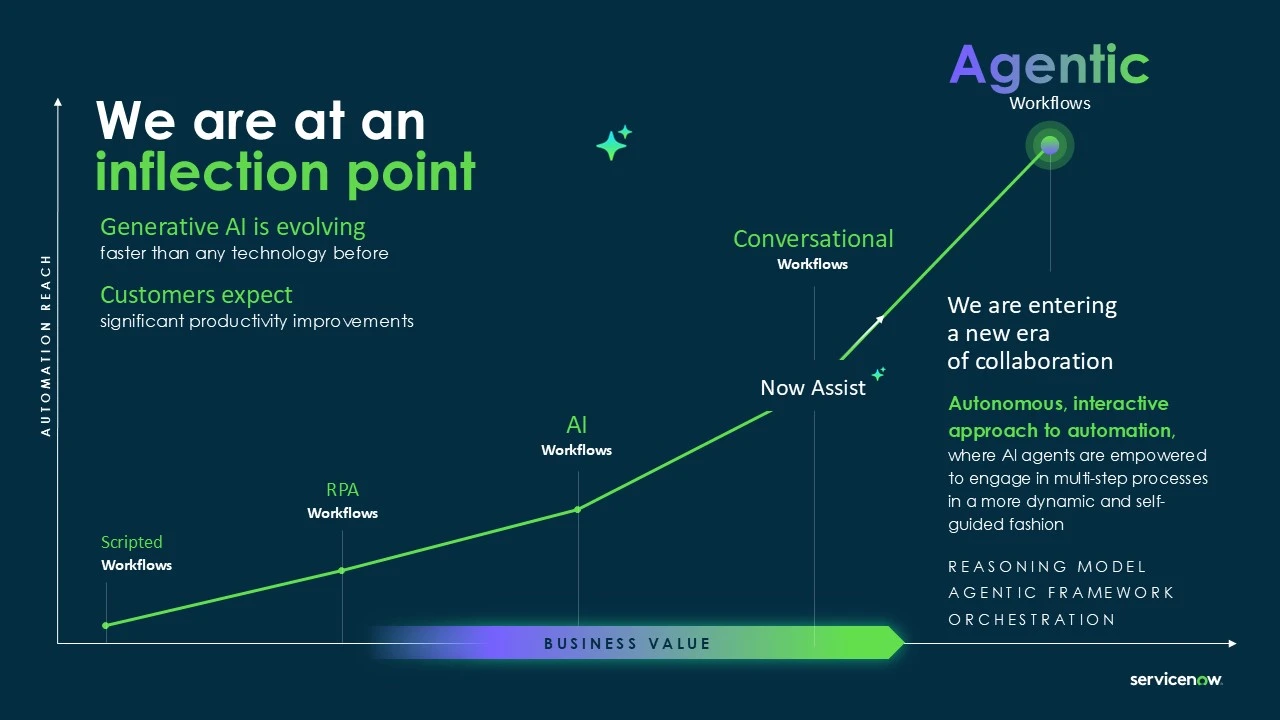
This is the moment of truth, and the leaders must now choose. Do they want to keep patching these disconnected silos, or pivot to a unified automation strategy that consolidates workflows, data, and AI into a single, scalable ecosystem?
ServiceNow and the Shift Toward Platform-Centric Automation
Disconnected automation blocks growth and limits impact. Migrating to ServiceNow provides a unified foundation that delivers scale, stability, and AI readiness.
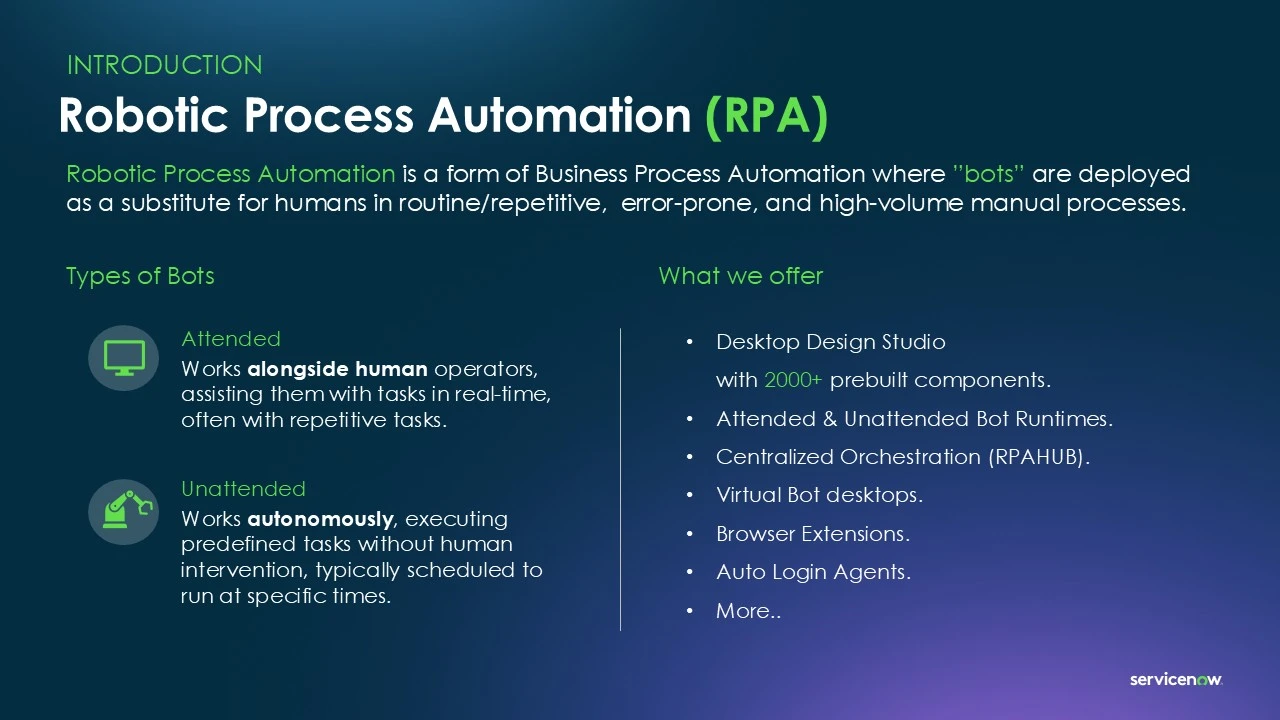
Key differentiators setting ServiceNow Automation apart include:
- Unified Data and AI Integration: Through Workflow Data Fabric (WDF), ServiceNow connects disparate data sources (structured and unstructured) from enterprise applications like SAP and Workday, data lakes such as Snowflake and Databricks, and external content repositories like SharePoint. This integrated approach ensures automation agents can leverage context-rich, actionable data.
- Agentic AI Capabilities: ServiceNow’s RPA platform is transitioning beyond traditional bot-based automation to a genuinely agentic model. These AI-powered agents autonomously orchestrate workflows, manage desktop tasks, and dynamically interact with both structured and unstructured data. Innovations like ServiceNow Lens bring advanced, vision-based AI to automate interactions with emails, PDFs, websites, dashboards, and more.
- End-to-End Automation Management: The central Automation Center provides comprehensive governance and tracking of automation initiatives across the enterprise, extending beyond the ServiceNow ecosystem. Organizations can measure ROI and manage automations centrally, eliminating complexity and duplication.
- Flexible, Token-Based Pricing: Recognizing the dynamic nature of enterprise automation needs, ServiceNow is shifting to a token-based pricing model. This innovation provides enterprises with flexibility in scaling automation solutions, enabling the dynamic allocation of resources across automation tools such as RPA, document intelligence, API integrations, and process mining.
- Proven Cost Efficiency and Performance: Organizations that adopt ServiceNow Automation realize significant cost efficiencies, averaging at least a 30% reduction in total cost of ownership over three years. Internal migrations, including ServiceNow’s transition from UiPath, demonstrate measurable improvements in bot performance, operational efficiency, and substantial savings on licensing and maintenance costs.
But Leaders Ask: What’s Stopping the Shift?
“While we see a lot of interest in migrating to ServiceNow RPA, customers often get stuck at the development effort and cost to rebuild automations. They tell us, ‘We would love to migrate, but we have already built multiple bots on existing platforms with years of investment, and we cannot rebuild everything from scratch."
— Vipul Srivastava, Director of Product Management, ServiceNow
Enterprises want to consolidate automation on a modern platform like ServiceNow, but legacy investments, as well as the cost and effort required for rebuilding, hinder this effort. That’s precisely where migrAIte steps in.
How Does migrAIte Transform the ServiceNow Migration Equation?
Traditional migration approaches are slow, costly, and resource-intensive. Rebuilding automations from scratch requires deep platform expertise on both the source and destination ends. The result - extended timelines, high redevelopment costs, and increased risk of business disruption. For most enterprises, this friction stalls transformation before it starts.
migrAIte eliminates this barrier through intelligent, AI-powered code conversion. Built specifically to simplify and accelerate RPA-to-ServiceNow transitions, migrAIte analyzes source bot code from platforms like UiPath and automatically converts it into ServiceNow-native automation, with up to 95% conversion coverage and minimal manual intervention.
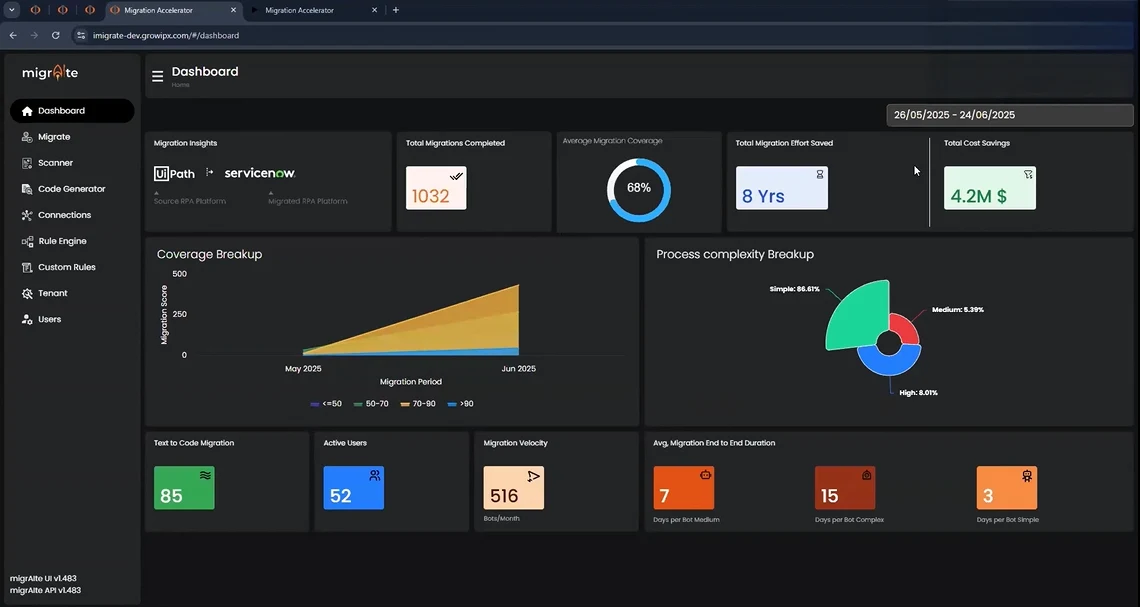
At the core of migrAIte is a modular architecture purpose-built for large-scale migration:
- AI-Led Assessment Engine
Intelligent scanning algorithms evaluate automation portfolios, identify migration-ready candidates, assess complexity, and prioritize by business impact. AI-powered conversion reduces migration effort by up to 70%, enabling rapid transition without disrupting business operations. - Autonomous Code Conversion
Proprietary conversion engines retain business logic while translating RPA syntax into ServiceNow-native workflows, removing the need for full-scale redevelopment. Automated code conversion and reuse deliver a 50% reduction in migration costs compared to traditional rebuild approaches. - Platform-Aware Optimization
Workflow mapping tools align automations with native ServiceNow components, ensuring compatibility and efficiency while reducing technical debt.
See migrAIte in Action.
Want to see how migrAIte converts legacy bots into ServiceNow-native automation, live and in real-time?
Watch our on-demand demo from the iOPEX + ServiceNow Webinar, where we walk through the migration engine, explain the conversion logic, and show how enterprises are moving from complexity to control.
Watch the full demo here - Enterprise-Grade ServiceNow Migration Starts Here: The Agentic AI Advantage.
What are the Key Components of the migrAIte Migration Engine?
The migrAIte platform combines four essential technologies that work together to transform enterprise automation:
1. Intelligent Assessment Framework
The built-in bulk scanner provides detailed insights into migration readiness across your automation portfolio. It evaluates conversion potential, prioritizes projects based on complexity, and identifies dependencies across applications and data sources. This assessment phase, which previously required weeks of expert analysis, now completes within minutes.
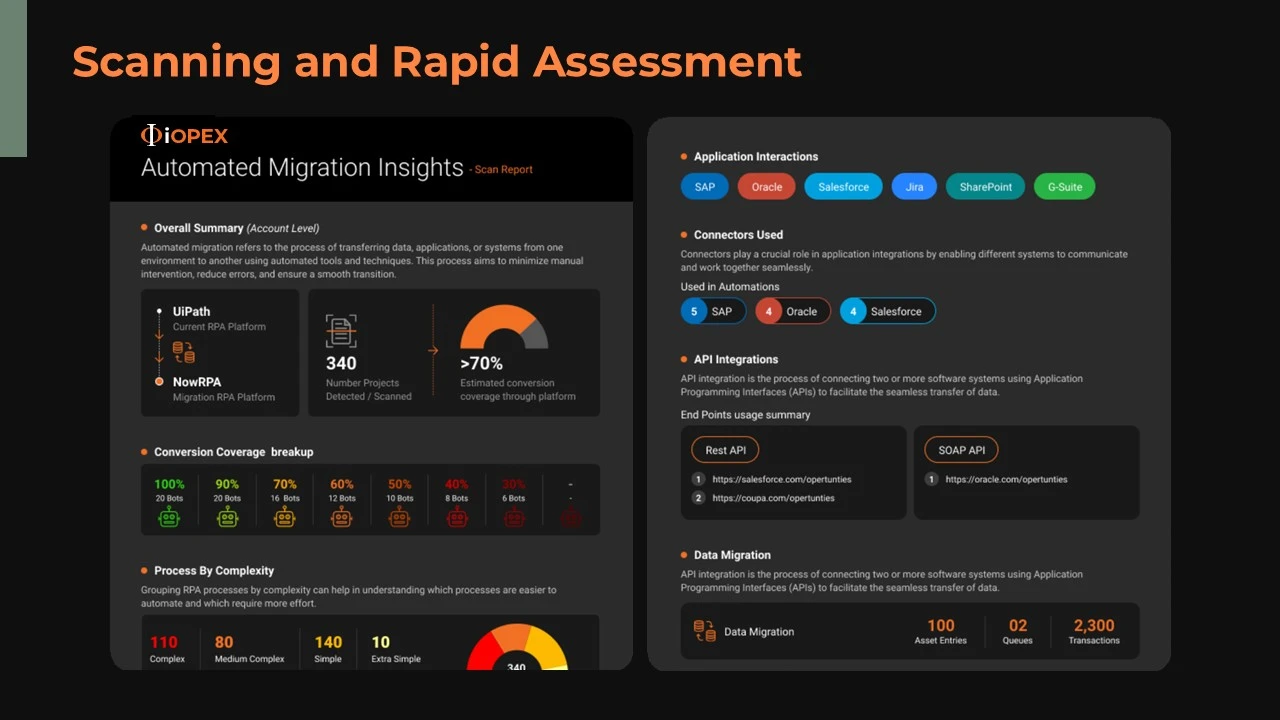
2.AI-Powered Code Conversion
The core conversion engine transforms source RPA code to ServiceNow-native automation with up to 95% conversion coverage. The technology maintains complete visibility into conversion status, clearly identifying fully migrated activities, partially migrated components, and elements requiring manual attention. This transparency allows development teams to focus exclusively on the small percentage requiring intervention.
3.Text-to-RPA Capabilities
Beyond migration, the platform enables teams to accelerate new automation development through natural language instructions. This capability extracts process details from business requirements documents, automatically creates visual process maps, and generates production-ready automation code, enhancing developer productivity.
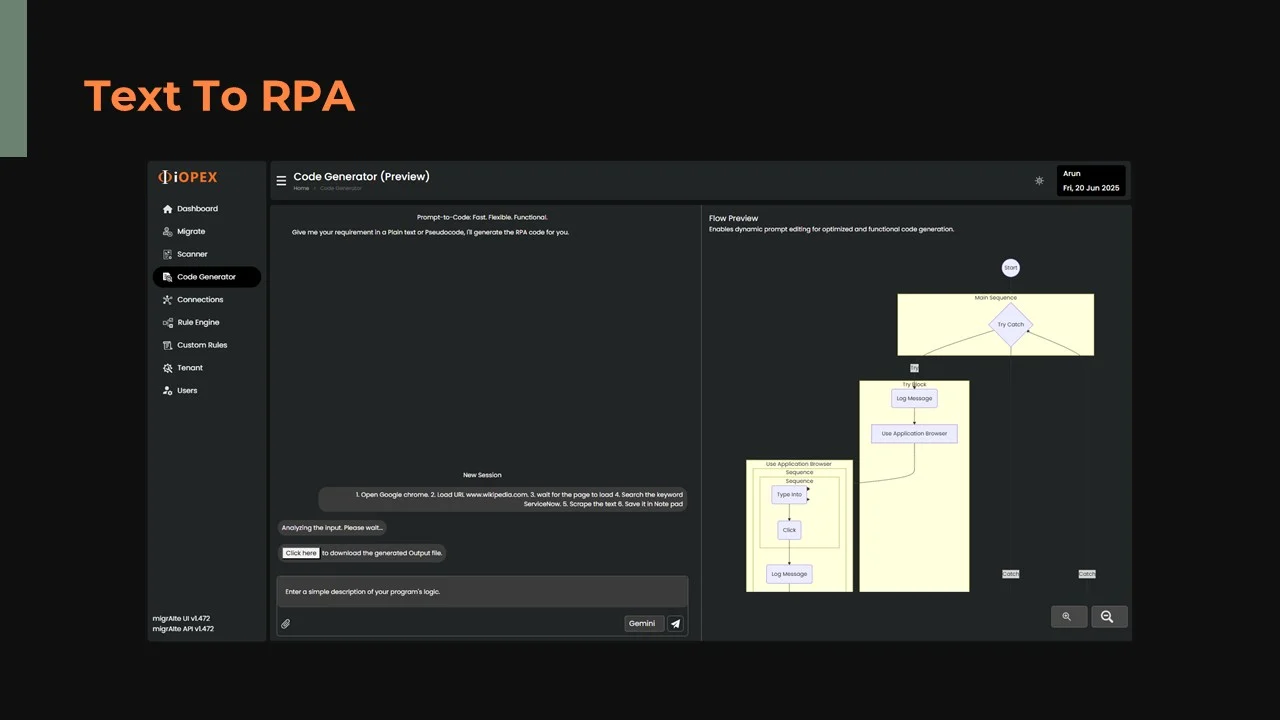
4.Agentic Workflow Orchestration
The platform analyzes automation patterns to recommend optimal ServiceNow workflow components. Rather than forcing all processes into RPA solutions, it intelligently identifies opportunities to leverage ServiceNow’s broader workflow data fabric capabilities, creating truly intelligent, end-to-end processes.
“Software migrations can literally take years to complete and put significant strain on your capex and opex. Cost efficiency is not the only challenge; reskilling teams, testing overheads, and deciding whether to move as-is or make refinements along the way make any migration project daunting.
Our AI-powered migrAIte was born from this challenge, evolving from a simple migration tool to an accelerator that helps reimagine and reinvent workflows while providing a smooth runway to the agentic AI world.”
-Harsha Ramamurthy, SVP of Digital Transformation at iOPEX Technologies.
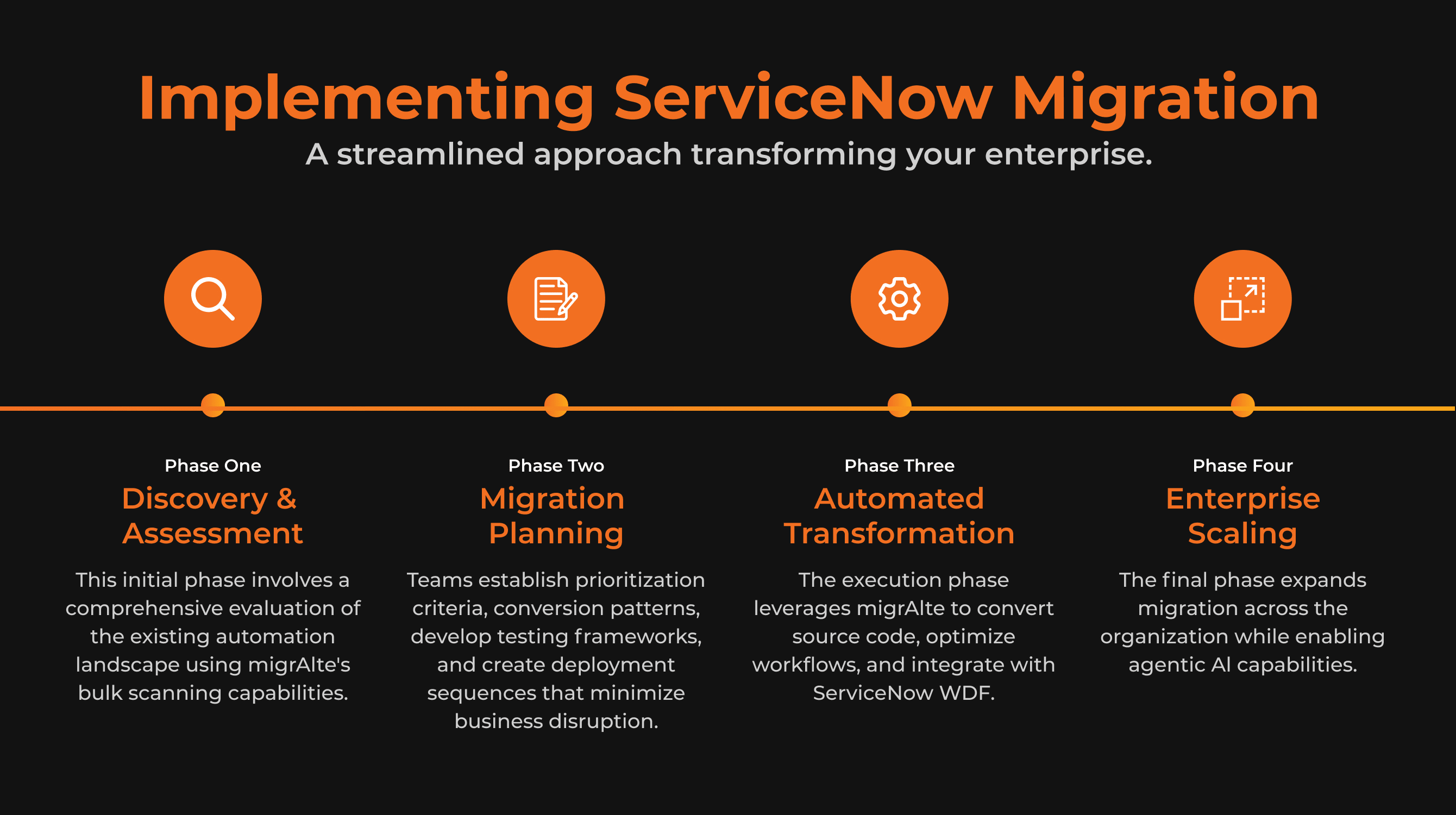
How iOPEX Accelerates ServiceNow Transformation with Agentic AI-powered migrAIte?
As enterprises navigate this transformation journey, iOPEX brings specialized expertise in enterprise automation modernization. Our proprietary migrAIte platform, combined with deep ServiceNow implementation experience, accelerates migration while minimizing risk.
Enterprises partnering with iOPEX consistently achieve 50% cost reduction in migration initiatives compared to traditional approaches. The combination of automated conversion and optimization expertise delivers 30% efficiency improvements across migrated processes, while establishing the foundation for a 70% increase in AI-driven insights through unified data and workflow integration.
The industry is at an inflection point as it shifts decisively toward truly agentic workflows. In the AI era, the automation foundation built over the next 12 months will define how enterprises outperform their competitors, not just in the near term, but for decades to come. More organizations are now adopting unified automation strategies, especially on platforms like ServiceNow, where workflows, data, and AI can operate in concert at enterprise scale.
To learn more about accelerating your ServiceNow migration journey, connect with transformation experts at iOPEX.










